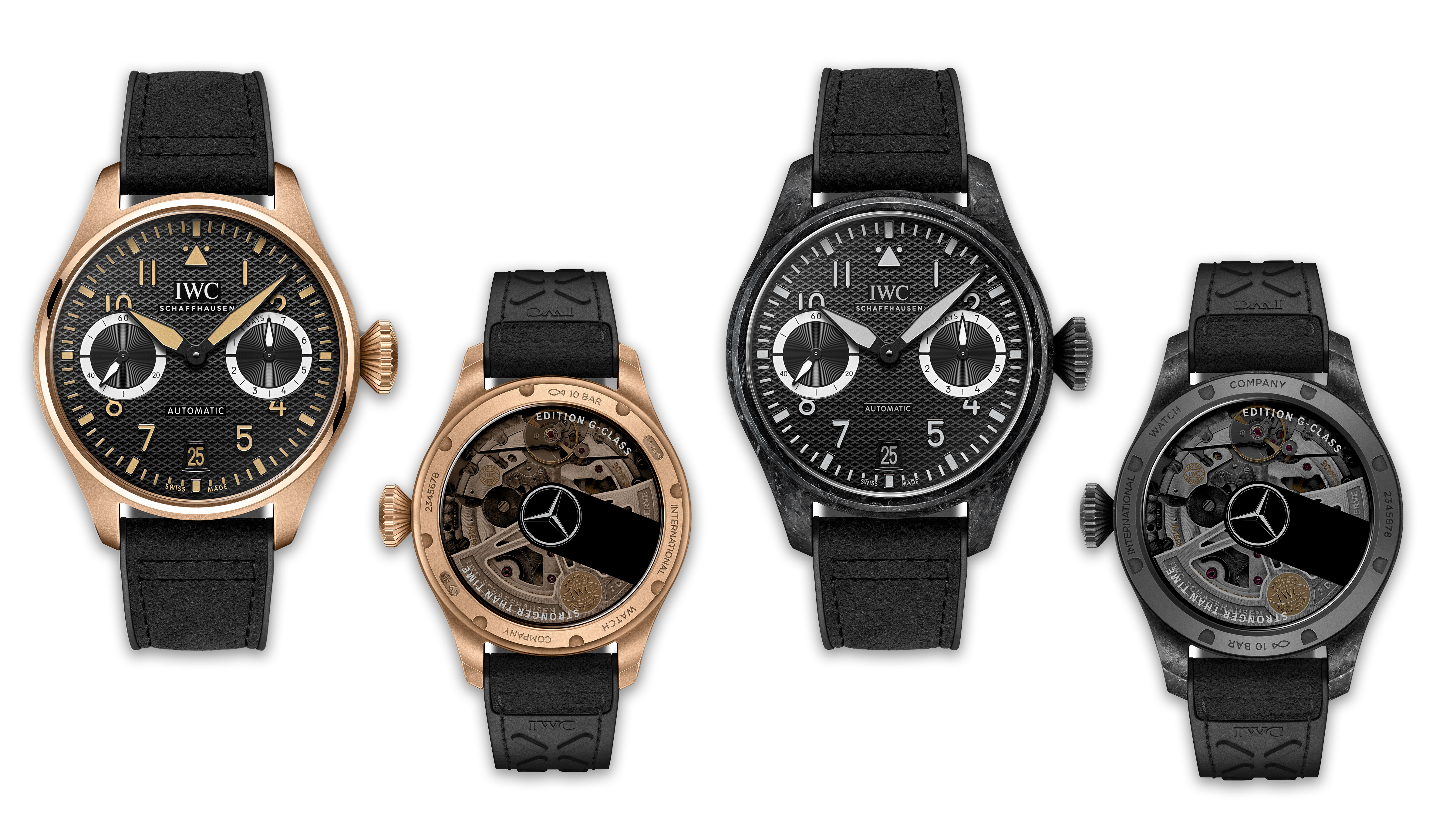These new IWC watches are inspired by the Mercedes G-Wagon
IWC Big Pilot’s Watch AMG G 63 has a massive 168 hours of power reserve


Swiss watchmaker IWC has revealed a pair of new timepieces inspired by the Mercedes G-Wagon, with the option of a gold or carbon case and a massive, week-long power reserve.
Taking inspiration from the utilitarian Mercedes-AMG G 63, the watch is available with a case made of gold or carbon, each with a sapphire exhibition case back and a dial design inspired by the grilles of AMG cars.
The case and crown of the gold model are actually made from IWC’s 18-carat Armour Gold, an alloy that is stronger than regular gold, which tends to be quite soft. The large case measures 46.2 mm in diameter and is 14.4 mm thick, with sapphire crystal on the front and back and a black rubber strap with microfibre inlay.
Water resistant to 10-bar, or 100 metres, the watch is powered by IWC’s own 52010 automatic mechanical movement that has 31 jewels and an enormous power reserve of 168 hours, or a full seven days.
This is achieved thanks to a mechanism that uses “even the smallest movements of the rotor in both directions,” IWC says, to build up a week-long power reserve. The movement is visible through an exhibition case back that features a Mercedes logo at its centre and ‘Edition G-Class’ etching. The dial features a date complication at the six o’clock position and a pair of subdials showing seconds and the power reserve measured in days.
Despite the classy looks of the gold case, we reckon the carbon edition is the more interesting of the two. It's the first IWC watch to feature a case made from ceramic matrix composite (CMC). Engineered in collaboration with the German Aerospace Center, the fibres of the composite material are embedded in a matrix of ceramic, rather than a polymer, IWC says. This helps the case withstand thermal shock, or sudden temperature change.
The material is made by starting with a conventional carbon fibre-reinforced polymer, IWC explains, then subjecting it to a heat treatment called pyrolysis over the course of several days. What’s left behind is “a dense weave of fibres embedded in a porous carbon matrix,” the company says.
Get all the latest news, reviews, deals and buying guides on gorgeous tech, home and active products from the T3 experts
Silicon crystals are then placed on top and the component is heated in an oven; during this so-called siliconisation, silicon is pulled into the cavities of the carbon and causes a chemical reaction that forms a new matrix made of silicon carbide ceramic.
The case is then finished with diamond tools and the end result is a carbon pattern that is unique to every watch. IWC’s carbon watch is mechanically identical to the gold version, save for the case being fractional larger, at 46.5 mm by 14.6 mm.
Alistair is a freelance automotive and technology journalist. He has bylines on esteemed sites such as the BBC, Forbes, TechRadar, and of best of all, T3, where he covers topics ranging from classic cars and men's lifestyle, to smart home technology, phones, electric cars, autonomy, Swiss watches, and much more besides. He is an experienced journalist, writing news, features, interviews and product reviews. If that didn't make him busy enough, he is also the co-host of the AutoChat podcast.
